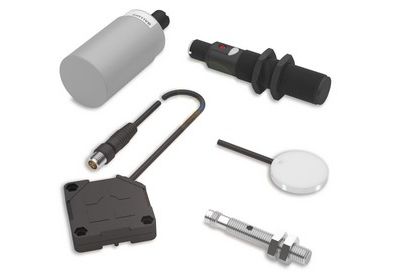Balluff Capacitive sensors
A capacitive sensor is a parametric converter in which a change in the measured value is converted into a change in capacitive resistance. The sensor allows you to control the value of certain process parameters due to the relationship between the value of its capacitive resistance and the value of the controlled parameter. The main element of Balluff capacitive sensors is a capacitor, which can be made in a flat or cylindrical form. When the movable plate of the capacitor begins to move, increasing the distance to the fixed plate, the dielectric is deformed, and its position changes, leading to a change in the permittivity and many other parameters.
Technology Behind Balluff Capacitive Sensors
The principle of changing electrical capacitance is the basis of Balluff sensor technology. Such sensors are designed to detect various materials such as metals, plastics, glass, wood, and liquids. They create an electric field between two metal plates or electrodes, which act as a capacitor.
When an object approaches the sensor, it enters this electric field and its dielectric properties change the capacitance of the capacitor. Internal circuits in the sensor record these changes in capacitance and convert them into an electrical signal, which is then used to control various devices or automation systems. This ability to detect changes in capacitance allows Balluff capacitive sensors to detect objects even through non-conductive materials such as glass or plastic.
Types of Balluff Capacitive Sensors
The company offers you a choice of different types of capacitive sensors that can be adapted to solve a variety of problems in industrial automation. Here are their main types.
Cylindrical sensors
Cylindrical Balluff non-contact sensors are available in different diameters, allowing you to choose the right size for your application. You can use these sensors to detect objects or materials over short distances and can be integrated into tight spaces.
Flat sensors
Flat or compact sensors are useful when space is limited or you require surface mounting. These sensors can detect objects through non-conductive materials such as glass or plastic and are often used to monitor the level of liquids in tanks or containers.
Level sensors
Level sensors are designed to accurately monitor the level of liquids, powders, and granular materials. You can install Balluff level sensors outside of tanks, allowing them to measure the level through container walls made of non-conductive materials such as plastic or glass.
Extended range sensors
These sensors have an extended detection range, making them ideal when you require a long distance between the sensor and the object being detected. They provide stable detection of objects even in dusty, dirty, or otherwise contaminated environments.
High-temperature sensors
These types of sensors are designed to operate in elevated temperature environments. They are used in applications where standard sensors may fail due to extreme temperatures, such as in the metal or glass industries.
Installation and Configuration
Installing and configuring industrial capacitive sensors requires careful attention from you to ensure optimal performance and accurate detection of objects or materials. Below we have prepared some effective tips for you.
- Select the required device, such as Balluff capacitive proximity sensors or level sensors.
- Determine the optimal location for installing the sensor depending on the type of application.
- Make sure that the installation location allows the sensor to detect an object or material within its range.
- Mount the sensor in the pre-selected location. In the case of cylindrical sensors, a mounting mount with threaded connections is usually used, while flat sensors are often mounted using special mounts or mounting brackets.
- Connect the sensor to the power supply and the controller according to the wiring diagram specified in the manufacturer's instructions. Make sure that the connections are made correctly to avoid damage to the equipment or incorrect operation of the sensor.
- After installation and configuration, check the operation of the sensor using test objects. Make sure that the sensor reacts correctly to the presence and absence of an object or material in its detection area. Make the necessary adjustments to the sensitivity setting or the position of the sensor if necessary.
- Perform a full test of the automation system to ensure that the capacitive sensor functions as part of the overall control system. Check that the signals transmitted by the sensor are correct and that they are interpreted by the controller.
Why Choose Balluff for Capacitive Sensing?
You should choose Balluff for non-contact detection sensors because of their reliability, quality, and innovative technologies that the company has been developing for decades. Balluff offers a wide range of capacitive sensors that can solve a variety of tasks, from liquid-level detection to solid material detection, even through non-conductive surfaces.
Balluff sensors are characterized by high accuracy and stability in operation, which is especially important for industrial processes that require reliable and precise detection of objects and materials. In addition, Balluff capacitive sensing solutions are highly resistant to various operating conditions such as dirt, humidity, and extreme temperatures, making them ideal for use in the harshest environments.
